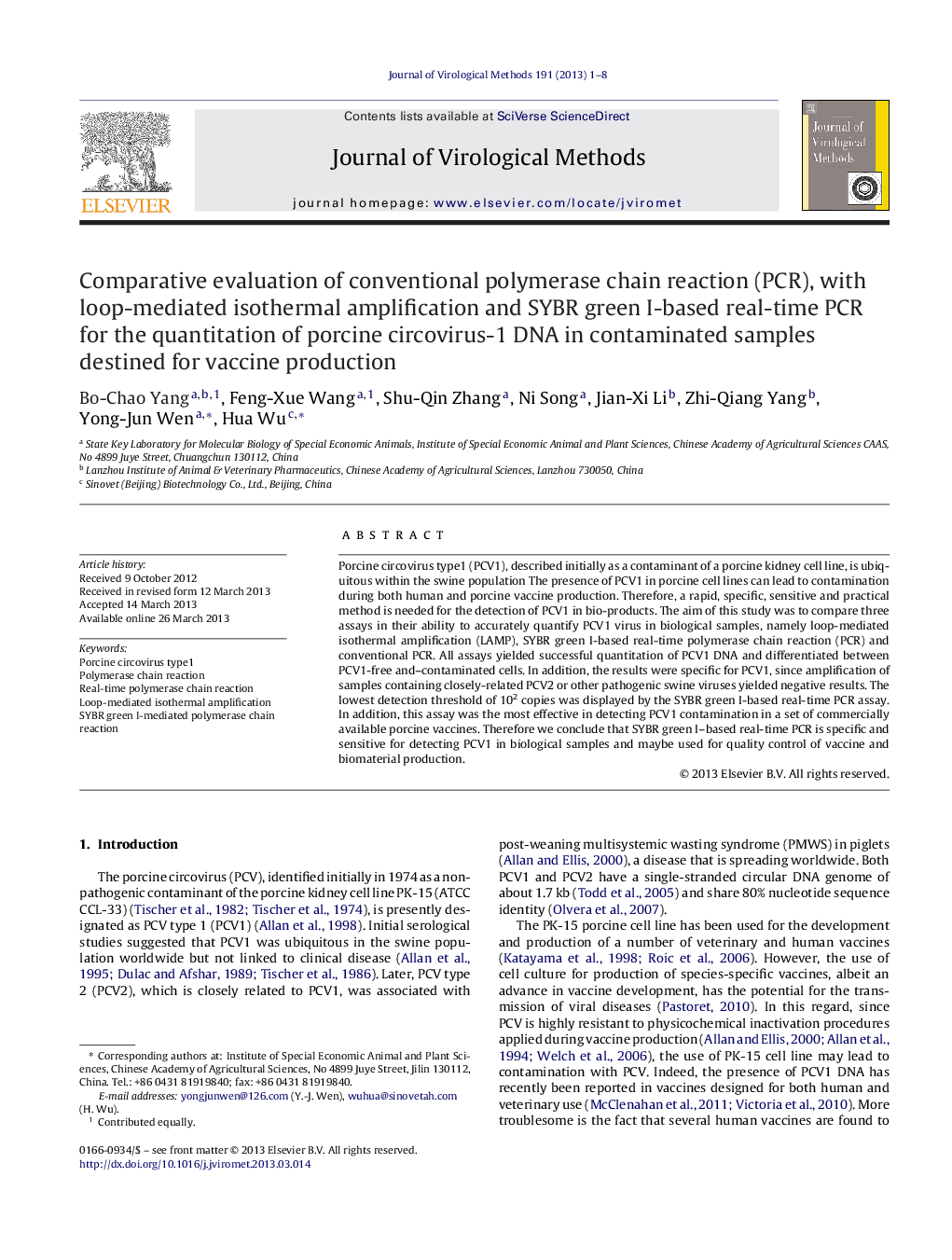| Article ID | Journal | Published Year | Pages | File Type |
|---|---|---|---|---|
| 3406637 | Journal of Virological Methods | 2013 | 8 Pages |
•To quantify PCV1 virus by LAMP, SYBR green I-based real-time PCR and conventional PCR.•The lowest detection threshold of 102 copies was displayed by the SYBR green I-based real-time PCR assay.•SYBR green I-based real-time PCR assay was the most effective in detecting PCV1 contamination.
Porcine circovirus type1 (PCV1), described initially as a contaminant of a porcine kidney cell line, is ubiquitous within the swine population The presence of PCV1 in porcine cell lines can lead to contamination during both human and porcine vaccine production. Therefore, a rapid, specific, sensitive and practical method is needed for the detection of PCV1 in bio-products. The aim of this study was to compare three assays in their ability to accurately quantify PCV1 virus in biological samples, namely loop-mediated isothermal amplification (LAMP), SYBR green I-based real-time polymerase chain reaction (PCR) and conventional PCR. All assays yielded successful quantitation of PCV1 DNA and differentiated between PCV1-free and–contaminated cells. In addition, the results were specific for PCV1, since amplification of samples containing closely-related PCV2 or other pathogenic swine viruses yielded negative results. The lowest detection threshold of 102 copies was displayed by the SYBR green I-based real-time PCR assay. In addition, this assay was the most effective in detecting PCV1 contamination in a set of commercially available porcine vaccines. Therefore we conclude that SYBR green I–based real-time PCR is specific and sensitive for detecting PCV1 in biological samples and maybe used for quality control of vaccine and biomaterial production.
